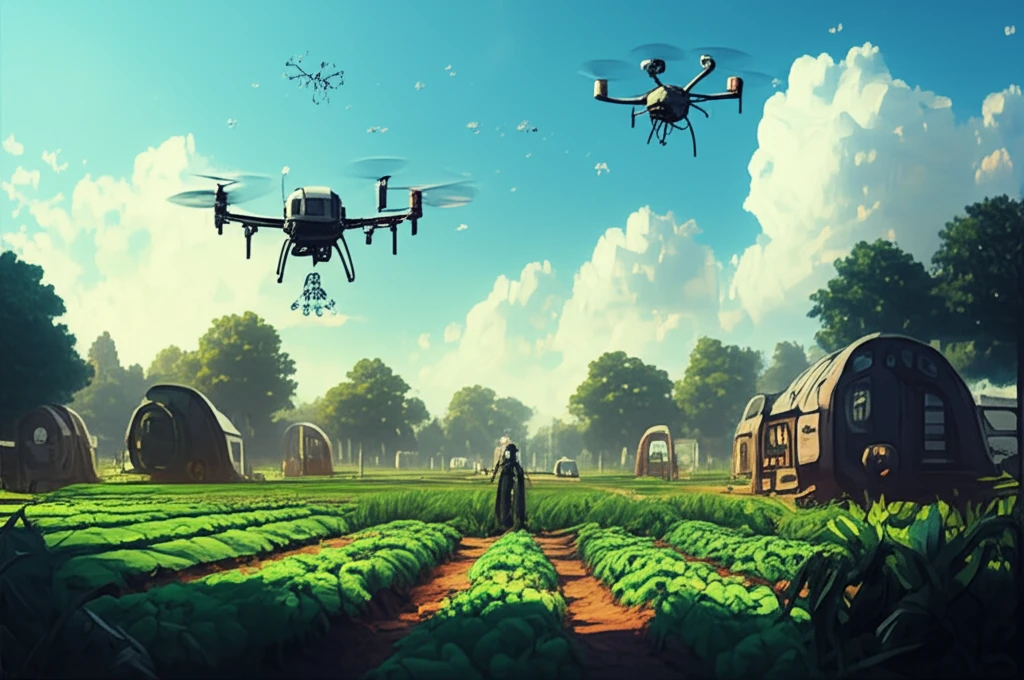
Precision Farming's New Ally: How Smart Drones Are Revolutionizing Agriculture
"Discover how task allocation algorithms and submodular maximization are optimizing agricultural remote sensing with UAVs, enhancing crop health and yields."
The rapid advancement of unmanned aerial vehicle (UAV) technology has opened new frontiers in numerous sectors, with agriculture emerging as a prime beneficiary. Often lauded for their versatility and efficiency, UAVs, commonly known as drones, are reshaping traditional farming practices. Their ability to provide detailed, real-time data collection is revolutionizing how farmers monitor and manage their crops.
Agricultural remote sensing with UAVs has become increasingly valuable, thanks to the sophisticated data processing technologies now available. Equipped with various payloads, these drones can capture high-resolution images and collect critical environmental data, offering insights previously unattainable. For instance, UAVs can automate the detection and classification of crop diseases, assess soil moisture levels, and monitor overall crop health, all crucial for optimizing agricultural outputs.
By employing multiple UAVs, each equipped with different sensors, farmers can gather diverse measurements across extensive agricultural areas in a fraction of the time it would take using conventional methods. However, to fully leverage the capabilities of UAVs, it's essential to implement effective task allocation algorithms. These algorithms ensure that each drone is assigned the most appropriate tasks, maximizing efficiency and data quality.
Decoding Task Allocation: How Does It Work?

At its core, task allocation involves assigning specific sensing tasks to the most suitable UAVs, optimizing the overall operation. This process can be defined as a reward function maximization problem, where algorithms work to maximize the value derived from each task assignment. This involves several critical considerations:
- Sensor Matching: Algorithms ensure UAVs with CCD cameras are deployed to areas where disease detection is critical, while those with RADAR sensors focus on fields at risk of drought.
- Hazard Detection: Focus on detecting the most severe threats to crops, such as yellow rust in winter wheat or brown spot in rice, during their peak seasons.
- Time Efficiency: Minimize UAV operation time to ensure rapid data acquisition and reduce fuel consumption.
- Balanced Workload: Distribute tasks evenly among UAVs to prevent overload and ensure consistent performance across the fleet.
The Future of Farming: Enhanced Efficiency and Sustainability
The integration of UAVs and submodular maximization algorithms in agriculture represents a significant step forward in precision farming. By optimizing task allocation, farmers can now monitor their crops more effectively, respond quickly to threats, and ultimately improve yields while minimizing resource use. As technology continues to evolve, expect even more sophisticated applications of UAVs in agriculture, further enhancing efficiency and sustainability.
